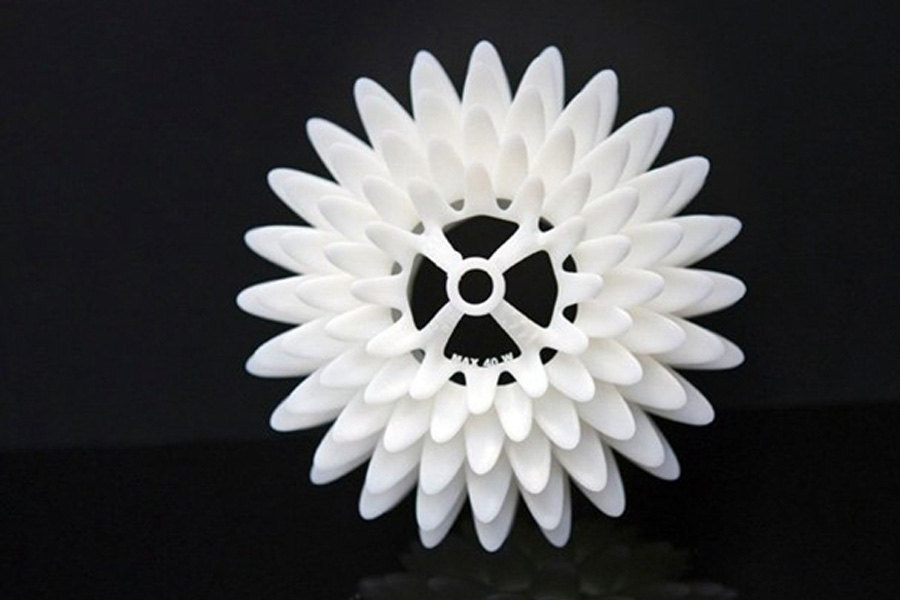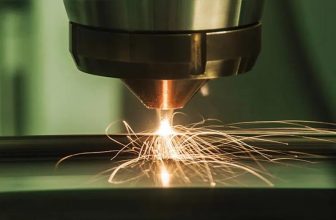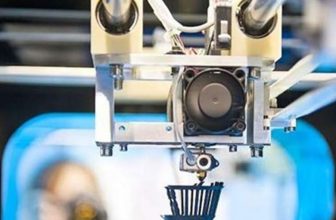
The concept of reverse design:
Before talking about reverse design, let’s first look at the process of traditional product development: conception-design-product prototype. As the name suggests, the so-called reverse design concept is exactly the opposite of forward design.
Reverse design, reverse design, reverse engineering, is a kind of design based on reverse reasoning, by generating patterns from existing samples or prototypes, and then making improvements according to the expected effects, and finally surpassing the design process of existing products or systems . In simple terms, the process is: physical parts-surface contour digitization-data processing-model reconstruction or innovative design-products.
Reverse design is not just a product imitation, it also shoulders many important tasks such as restoration of mathematical models and optimization of redesign.
At present, the application fields of reverse design have been expanded to include machinery, electronics, automobiles, automation, biomedicine, aerospace, cultural relics and archaeology, optical equipment, home appliances and other related industries.
The basic steps of reverse design
The basic steps of reverse design include the following.
- (1) Production of test samples of the designed and processed objects. Before collecting sample data of the designed processing object, the equipment and method of data collection should be considered. In order to ensure data accuracy and reduce data errors, the samples must be cleaned, air-dried and other pretreatments, and the laser-scanned workpieces must be sprayed. For special parts, fixture design is also required, taking into account the completeness of data collection.
- (2) Three-dimensional digital measurement of part prototype. Using coordinate measuring machine (CMM) or laser scanning and other measuring devices, the three-dimensional coordinate values of the surface points of the part prototype are collected through measurement; the discrete point cloud data is processed by reverse design software. Complex parts often present irregular features of various shapes, and a scan can only be performed on one surface. For complex surfaces, it is difficult to scan from one angle to get all the data needed. Therefore, when scanning, it is necessary to make a reversible bracket based on a specific part sample, and convert various angles for scanning. After the scan is completed, the multi-view scan data must be re-integrated.
- (3) Three-dimensional reconstruction of part prototype. The parts are segmented according to the geometric properties of the measurement data, and the method of geometric feature matching and recognition is used to obtain the design and processing features of the part prototype. Fit the divided three-dimensional data in the CAD system for surface fitting, and obtain the CAD model of the part prototype through the solution and splicing of each surface patch.
- (4) Analysis and improvement of CAD model. For the reconstructed CAD model of the part, the principle and function are analyzed and optimized according to the purpose of the product, the position and function of the part in the product, etc., to ensure the good man-machine performance of the product, and to improve and innovate the product.
- (5) Check and revise the CAD model. According to the obtained CAD model, the method of re-measurement and processing of samples is adopted to verify whether the reconstructed CAD model meets the requirements of accuracy or other test performance indicators. Find out the reasons for the samples that do not meet the requirements, scan and model them again, until they meet the requirements of the design indicators such as the function and purpose of the part.
- (6) Product innovation integrating forward and reverse. “Product-reverse-product”, that is, simple imitation of products, this is the primary application of reverse engineering. “Reverse product design-improvement product” means to improve the design of the product and absorb foreign advanced technology. This is the intermediate application of reverse engineering. “Concept sketch-scale model-three-dimensional measurement (reverse)-data reconstruction (the process of design evaluation and modification)-mold-real product”, this is an advanced application of reverse engineering. For example, in the design and manufacturing process of airplanes, automobiles, molds and other industries, products are usually spliced by complex free-form surfaces. In this case, designers usually first design conceptual drawings, and then use sludge, clay models or wooden molds. Instead of 3D-CAD design, and use measuring equipment to measure the shape, construct a CAD model, design on this basis, and finally manufacture the product.
Key Points of CAD Modeling in Reverse Design
Reverse design is only a part of design, not the purpose of design. The purpose of design is innovation. Reverse design technology serves for design innovation. The correct position of the use of reverse design should be determined so that reverse design can better serve product innovation design.
- (1) In order to improve the ability of reverse design to reconstruct the digital model of the product, so that it can be parameterized or adaptively designed. Before starting the modeling, the structure and function of the product or part should be analyzed, and the design principle and design plan should be deduced to guide the extraction of features and the modeling of the part.
- (2) In reverse modeling, it is necessary to understand and analyze the design intent and modeling method of the physical model, and restore the original design parameters based on the measurement data.
- (3) There are always some geometric constraint relationships on parts, such as collinear, coplanar, line-to-line, surface-to-surface parallel or perpendicular, etc. These can provide guidance for feature extraction and modeling, and carry out certain inverse dimensions. Correction, for example, when extracting the contour of the end face of the part, make the contour lines coplanar. The modification design of some products is the same, only some of the features are modified. The joint between the modified feature and the part that does not need to be modified can be regarded as a geometric constraint relationship, which must be taken into consideration when inversely seeking. Reverse design and forward design need to consider the connection between this part of the design surface and other surfaces. The boundary curve of other surfaces can be extracted as the boundary of this part of the surface design. There is an assembly relationship between some parts and other parts. At this time, assembly constraints must be taken into account, and special attention must be paid to the dimensions related to assembly.
- (4) In the field of reverse design, there are three main model parameters: design parameters, physical parameters and reconstruction parameters.
Design parameters refer to the dimensions marked on part drawings or product digital models, which are the basis for design and manufacturing.
The physical parameters refer to the inherent parameters of the parts themselves, and are the embodiment of the design parameters on the physical objects.
The reconstruction parameters are obtained based on the measurement data processing and are reflected in the reconstructed product digital model. The original design parameter restoration means that the reconstruction parameters are required to be as consistent as possible with the original design parameters. It is the key to the higher stage of reverse design. Where, its direct purpose is to solve the problem of de-counterfeiting and keeping the authenticity of the real object, that is, to eliminate errors in manufacturing, assembly, wear, measurement, and calculation that may be contained in the product, and to restore its design parameters under the premise of the expansion of the anti-beijing customs. However, its fundamental purpose is to fundamentally understand the processing methods and methods for the relationship between various design factors in design, find out the design ideas and design results that have been proved to be correct in practice, and improve the ability of independent design from the surface.
Application range of reverse design
Combining the fast-developing 3D printing technology and digital control technology, reverse design has been rapidly developed and applied in aerospace, automotive, industrial manufacturing, medical and other fields, which is concentrated in the following aspects:
(1) New product development
In order to meet the needs of competition, enterprises continue to improve their products, and gradually incorporate industrial aesthetics design into the category of innovative design, so that the products develop in the direction of aesthetics and art. In the appearance design of automobiles, airplanes and other products, industrial designers use sludge, wood molds or foam plastics to make scale models of the products. It is easy to evaluate and determine the appearance of the product from an aesthetic point of view, and then transform it through reverse engineering technology. It is a CAD model, and then gets accurate digital definition. This will not only make full use of the advantages of CAD technology, but also adapt to the needs of information exchange in the intelligent and integrated product design and manufacturing process.
(2) Imitation and retrofit design of products
Use reverse design technology for data measurement and data processing, rebuild the CAD model consistent with the actual object, and perform follow-up operations on this basis. Such as model modification, part design, finite element analysis, error analysis, CNC machining instruction generation, etc., and finally realize product imitation and improvement. This is a common product design method, as well as a means to digest and absorb advanced design methods and concepts at home and abroad to improve their design level. This method is widely used in the repair, transformation and innovative design of the appearance of motorcycles, household appliances, toys and other products.
(3) Restoration and repair of partial areas of the product
The use of reverse engineering technology can extract the corresponding features or feature parameters from the damaged parts, carry out independent design and development, or obtain feature information from the surface data to restore the appearance and calculate the structural design of the product, or to calculate the part of the product The area is restored and repaired.
(4) Rapid mold manufacturing
The application of reverse engineering technology in rapid mold manufacturing is mainly reflected in two aspects: In one case, the sample mold is the object, the mold that has met the requirements is measured, the CAD model is rebuilt, and the processing program is generated on this basis. This can improve the efficiency of mold generation and reduce the cost of mold manufacturing; the other case is to use physical parts as the object, reverse the geometric CAD model, and design the mold on this basis.
(5) Protection and monitoring of cultural relics
Large outdoor cultural relics are exposed to wind and sun all year round, and are prone to weathering and damage. Use reverse design technology to measure and scan it regularly, and input the surface data into the computer to reconstruct the model. Through the comparison of the two models, the weathering damage point can be found, so as to formulate corresponding protection measures or carry out corresponding repairs to make it Keep it as it is.
(6) Application combination in the medical field
CT, MRI and other advanced medical technologies, reverse design can design and manufacture prostheses according to the shape of human bones and joints. Based on the data obtained from the measurement of the human body surface profile, a geometric model of the human body is established to manufacture special clothing compatible with the surface profile, such as the manufacture of helmets, seats and aerospace clothing in the aerospace field. The reverse design method combined with 3D printing technology has a wide range of medical applications, such as surgical implantation and repair design.
(7) CAE model analysis
Converting physical parts into computer-expressed product digital models in order to make full use of the existing computer-aided analysis (CAE) technology to simulate and analyze them and evaluate their performance indicators is a new development direction of reverse engineering. For the processed parts, scan and measure, use the surface reconstruction technology in reverse design to construct a CAD model, and compare the model with the geometric model of the original design on the computer, which can detect manufacturing errors and improve detection accuracy. In addition, with the help of industrial CT technology, reverse engineering can not only produce the external shape of the object, but also quickly find and locate the internal defects of the object, thereby serving as an important means of non-destructive inspection of industrial products.
Precautions in the reverse design process
Reverse engineering design is not simple copy and plagiarism. A good reverse design is sometimes more challenging than forward design. Reverse design requires designers to master the corresponding software tools and also requires certain product and process experience. Only in this way can we accurately understand the structure and function of the product prototype, and carry out copy design or variation design on the basis of dissection, digestion and absorption, so as to achieve the purpose of copying, improving and surpassing existing products.
Therefore, before the reverse design, the designer should be able to fully understand and understand the following requirements.
(1) Quality requirements for 3D model surfaces of reconstructed products
The surface quality is mainly divided into A-level curved surfaces, B-level curved surfaces and some other less demanding curved surfaces:
A-level curved surfaces require that the transition between the curved surfaces must achieve continuous curvature, mainly for products with relatively high appearance requirements, such as the outer coverings of automobile bodies and the appearance surfaces of home appliances;
The B-level curved surface is required to be tangent and continuous, which can generally meet the requirements of most products, such as automobile interior parts, sheet metal parts of automobile chassis, etc.; other curved surfaces with lower requirements are mostly used for error analysis.
(2) The functional requirements of the product meet
Functional requirements are one of the most basic requirements for products. Before performing reverse design, it is necessary for designers to analyze the functional mechanism and structure of the product based on their own experience or the relevant product information they have, so as to know themselves and their counterparts.
(3) Product coordination requirements
Reverse engineering is a design process. The designed sample product is only a part of the whole machine, and there will be a matching relationship with its matching parts. Therefore, the structural design of the matching place between the reverse product and the existing peripheral parts will be affected. Affect the success or failure of a reverse design. Therefore, in the process of reverse design, the accuracy of the mating surface must be ensured to meet the assembly requirements.
(4) Process requirements of the product
Design and processing are two very closely related links. Each product has its corresponding production process, and the designed product may not meet the requirements of the processing technology, so the designer must have a certain understanding of the production process. The reverse design process can better understand and absorb the processing technology of the product sample, and avoid the failure of model reconstruction due to the omission of details.





